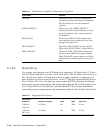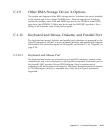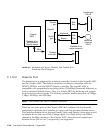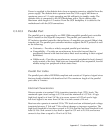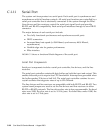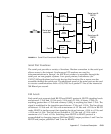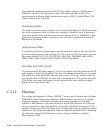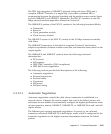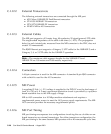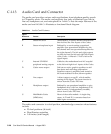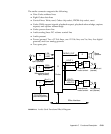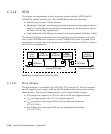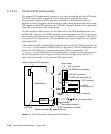
Appendix C Functional Description C-25
The PHY chip integrates a 100BASE-T physical coding sub-layer (PCS) and a
complete 10BASE-T module in a single chip. It provides a standard MII to
communicate between the physical signaling and the medium access control layers
for both 100BASE-X and 10BASE-T operations. The PHY IC interfaces to the 100-
Mbps physical-medium-dependent transceiver Twister IC.
The 100BASE-X portion of the PHY IC consists of the following functional blocks:
■ Transmitter
■ Receiver
■ Clock generation module
■ Clock recovery module
The 10BASE-T section of the PHY IC consists of the 10-Mbps transceiver module
with filters.
The 100BASE-T transceiver is included in a separate Twister IC and features
adaptive equalization, baseline wander correction, and transition time control on the
output signals.
The 100BASE-X and 10BASE-T sections share the following functional
characteristics:
■ PCS control
■ MII registers
■ IEEE 1149.1 controller (JTAG compliance)
■ IEEE 802.3u auto negotiation
The following sections provide brief descriptions of the following:
■ Automatic negotiation
■ External transceivers
■ External cables
■ Connectors
■ MII power
■ MII port timing
C.1.12.1 Automatic Negotiation
Automatic negotiation controls the cable when a connection is established to a
network device. It detects the various modes that exist in the linked partner and
advertises its own abilities to automatically configure the highest performance mode
of inter-operation, namely, 10BASE-T, 100BASE-TX, or 100BASE-T4 in half- and full-
duplex modes.
The Ethernet port supports automatic negotiation. At power up, an on-board
transceiver advertises 100BASE-TX in half-duplex mode, which is configured by the
automatic negotiation to the highest common denominator based on the linked
partner.




